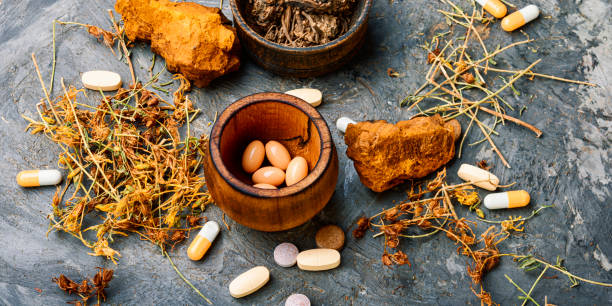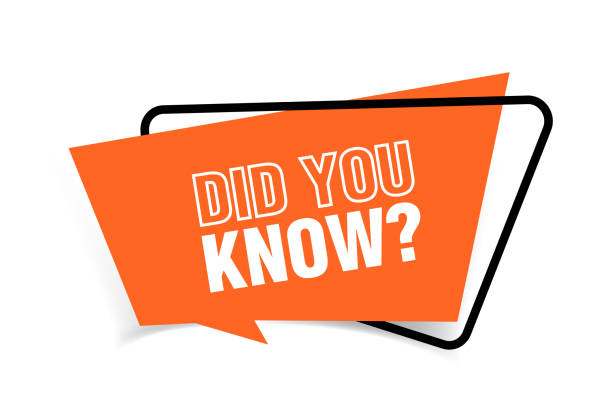I. Introduction: The Core of Siddha medicine:
In the tapestry of ancient healing traditions, Pathiyam , originating from South India, stands out as a holistic system that emphasizes the interconnectedness of the body, mind, and spirit. Central to Pathiyam‘s approach to health and well-being is the concept of Pathiyam, a comprehensive set of dietary and lifestyle guidelines.
Pathiyam is not merely about what you eat or how you spend your day; it’s a philosophy that aims to balance the body’s internal energies and maintain harmony with nature. This article delves into the intricate details of Pathiyam, exploring its foundational principles, dietary recommendations, lifestyle practices, and its relevance in achieving holistic wellness according to Siddha medicine.

Table of Contents
II. What is Siddha medicine A Holistic Approach to Health
Pathiyam, which can be translated as “wholesome living” or “regimen,” is far more than a simple diet plan. It’s an integral aspect of it that underscores the importance of maintaining a harmonious state within the body. In it , health is perceived as a dynamic balance of the three doshas (Vatham, Pitham, and Kapham), the body’s energetic principles, and any disturbance to these balances leads to ill health.
Pathiyam guides the individual on how to nourish and maintain the equilibrium of these doshas through appropriate diet and lifestyle choices. This is done by providing recommendations based on individual constitution, seasonal variations, and the nature of any disease being addressed.
The main use and benefit of adhering to Pathiyam is not just to alleviate symptoms, but to address the root cause of imbalances and to promote long-term health, all within the framework of Siddha medicine. By following Pathiyam, the body is brought to a state of balance, which helps in the prevention of diseases, a concept fundamental in Siddha medicine.
III. The Three Doshas (Vatham, Pitham, Kapham) and Their Dietary Connections within Siddha Medicine
The concept of the three doshas is foundational to understanding Pathiyam within Siddha medicine. Each dosha is associated with specific elements, properties, and physiological functions. Dietary guidelines in it are based on how different foods influence these doshas.
Understanding the doshas and their properties helps in creating dietary habits that support the body’s natural processes and balance, and this is the main purpose of diet as per Pathiyam in it .
- Vatham: Represented by air and space, Vatham governs movement, nervous system function, and all bodily actions, and is a key aspect of it .
- Characteristics: Cold, dry, light, and mobile.
- Dietary Guidelines (as per Siddha medicine): Foods that balance Vatham are warm, moist, and nourishing. Examples include cooked grains, root vegetables, and healthy oils. The benefit of these foods, as understood in it , is that they counteract the dry, cold qualities of Vatham, thereby calming the nervous system and promoting healthy circulation.
- Foods to Avoid (according to Siddha Medicine): Raw or cold foods, dry snacks, and excessive consumption of bitter and astringent foods which can aggravate Vatham.
- Pitham: Represented by fire and water, Pitham is responsible for digestion, metabolism, and body temperature, all vital functions in Siddha medicine.
- Characteristics: Hot, sharp, light, and slightly oily.
- Dietary Guidelines (as recommended in Siddha medicine): Foods that balance Pitham are cooling, calming, and slightly sweet. Examples include fruits, vegetables, and herbs with cooling properties. These foods help in balancing metabolism and temperature within the body and reduce heat related imbalances and their resultant symptoms as understood by it .
- Foods to Avoid (according to Siddha principles): Spicy, oily, fried, and sour foods, as these can aggravate Pitham and cause inflammation and digestive issues.
- Kapham: Represented by earth and water, Kapham provides structure, lubrication, and immunity, all crucial for well-being in it .
- Characteristics: Heavy, cold, oily, and stable.
- Dietary Guidelines (based on Siddha medicine): Foods that balance Kapham are warm, light, and slightly dry. Examples include cooked, leafy vegetables, pulses, and spicy foods in moderation. The use of these foods as understood in it is that they help in improving metabolism and reducing heaviness associated with Kapham.
- Foods to Avoid (as recommended in Siddha): Heavy, oily, greasy, cold, and sweet foods, which can increase Kapham, leading to lethargy, and congestion.
IV. Specific Foods and Their Effects on Different Body Types within it

Siddha medicine as outlined by it , emphasizes the unique effect of various foods on individual body types (constitutions) or Prakriti. Individuals with a dominant Vatham constitution, for example, may experience the benefit of consuming warm and moist food to calm their nervous system and digestive processes as advocated by it .
Those with a prominent Pitham constitution may benefit from cooling foods which help in digestion and reduction of heat related issues, according to the principles of Siddha medicine. Similarly, those with a Kapham constitution can benefit from warm, light foods, which enhance their metabolism, a key benefit of following Pathiyam in Siddha medicine. Some examples of foods and their effects based on Siddha medicine principles include:
- Grains:
- Rice: Considered balancing for Pitham, can aggravate Kapham in excess, it is understood in Siddha medicine that its use helps in providing energy while being easy to digest.
- Barley: Warming and helps balance Kapham. As per the principles of Siddha medicine, the use of barley helps in balancing heaviness of Kapham.
- Wheat: Nourishing and balancing, suitable for all doshas when consumed in moderation. This provides a good source of energy and is easy to digest, as understood in Siddha medicine.
- Fruits:
- Mango: Sweet and warming, useful for Vatham, but can aggravate Pitham in excess. Its use in Siddha medicine provides essential nutrients and support for Vatham.
- Watermelon: Cooling and helps balance Pitham. The benefit in Siddha medicine is its cooling effect in reducing heat from the body and calming digestion.
- Apples: Generally good for all doshas, nourishing and balancing. A good source of fiber and nutrients that can help with balanced digestion as mentioned in Siddha medicine texts.
- Vegetables:
- Leafy Greens: Light and warming, suitable for Kapham. Their use according to Siddha medicine helps in improving digestion and metabolism.
- Root Vegetables: Nourishing, good for Vatham. These help in nourishing the body and support energy levels in Siddha medicine.
- Cucumbers: Cooling and helps balance Pitham. The benefit in Siddha medicine is that it helps in improving digestion and reducing heat from the body.
- Spices:
- Ginger: Warming, helps balance Vatham and Kapham. It is used to improve digestion and circulation as advocated in Siddha medicine.
- Cumin: Aids digestion, good for all doshas. It helps in improving digestion and reducing bloating according to Siddha medicine.
- Turmeric: Anti-inflammatory, good for all doshas in moderation. The benefit is that it is a natural anti-inflammatory and antioxidant, an important aspect of Siddha medicine.
- Oils:
- Ghee: Warming, nourishing, good for Vatham. It’s use according to Siddha medicine helps in improving digestive strength and supports the nervous system.
- Coconut Oil: Cooling, good for Pitham. It helps in balancing metabolism and promoting cooling effect in the body as seen in Siddha medicine.
- Sesame Oil: Warming, good for Vatham in moderation. Used for its nourishing properties that helps balance Vatham within the framework of Siddha medicine.
V. Seasonal Dietary Guidelines in it
Siddha medicine also emphasizes the importance of adjusting the diet according to seasonal changes. The use of seasonal diets, a core principle in Siddha medicine, helps the body adapt to the environment and prevent illnesses.
- Summer: During the hot summer months, Pitham tends to accumulate. It is advisable to consume more cooling foods, including juicy fruits, vegetables, and beverages. Avoid spicy, oily, and fried foods. Benefits include reduced risk of inflammation, indigestion and heat related illnesses, as seen in Siddha medicine.
- Monsoon: During monsoon, all three doshas may fluctuate. A moderate and balanced diet is advised. Warm, freshly cooked foods are preferred, and heavy and oily foods should be avoided. The use of these diets in Siddha medicine prevents digestive and respiratory issues.
- Winter: In the cold winter months, Vatham may increase. Warming foods and drinks are recommended. Foods such as cooked grains, root vegetables, and healthy oils are useful. These help in preventing cold related issues, improve circulation and provide warmth, key elements of Siddha medicine.
VI. Fasting and Its Benefits According to Pathiyam :
Fasting is a traditional component of Pathiyam in Siddha medicine. Fasting practices in Siddha medicine are designed to give rest to the digestive system, detoxify the body, and allow the body to heal.
- Types of Fasting: Different types of fasting are practiced based on individual health needs, which may include abstaining from food for certain periods or eating only specific foods.
- Benefits of Fasting: According to Pathiyam , fasting helps cleanse the body by reducing the load on the digestive system. It helps balance the doshas and promote general wellness. Fasting also helps in enhancing metabolism, and aids in promoting internal healing mechanisms, as seen in Siddha medicine.
- Fasting should be advised by expert: Fasting practices should be followed according to guidance from a qualified expert, to prevent any adverse effects, as stressed in Pathiyam
VII. Siddha medicine: Lifestyle Practices in Pathiyam as Understood
Pathiyam is not limited to diet; it also includes comprehensive lifestyle practices that support overall health, an important aspect of Pathiyam
- Daily Routine (Dinacharya): Maintaining a regular daily routine which includes waking up early, regular exercise, and meals at consistent times is important for aligning the body with natural rhythms. Benefits, according to Siddha medicine, include improved energy levels and better digestion.
- Sleep: Adequate sleep is essential for healing and promoting mental and physical health. Siddha medicine recommends maintaining a regular sleep schedule and sleeping early at night.
- Its use improves mental clarity and supports the body’s natural healing processes.
- Regular Exercise: Practicing regular moderate exercise is important to promote blood circulation and overall health.Pathiyam recommends various activities such as walking, yoga, or other forms of physical activities suitable for the individual’s condition.
- Its benefits as outlined in Pathiyam include improved cardiovascular health and increased energy levels.
- Hygiene: Maintaining personal hygiene is important for maintaining a healthy state. Siddha medicine recommends regular bathing, and good practices for oral health. This helps in preventing infections and promotes well being.
- Mental and Spiritual Well-being: Pathiyam within Siddha medicine emphasizes the importance of mental and spiritual well-being. Practices like meditation, mindfulness, and spending time in nature are encouraged.
- The benefits of this according to Pathiyam include reduced stress and improved emotional balance.
- Seasonal Activities: Aligning one’s lifestyle according to the season is important. During hot summers, physical activities should be reduced. This helps in preventing heat related illnesses and imbalances, a key guideline in Pathiyam
VIII. Siddha medicine: and Modern Concepts of Personalized Nutrition: A Comparative View
Interestingly, the Siddha medicine concept of Pathiyam aligns with the modern interest in personalized nutrition. Modern research is increasingly pointing towards the need for individualized diets based on genetic makeup, metabolic type, and lifestyle.
This shows how Siddha medicine:, which is based on individual constitution, aligns with the modern ideas of personalized nutrition. The principles of Pathiyam provide guidelines on tailoring dietary and lifestyle choices to meet the specific needs of the individual, and is an essential step towards maintaining health within the framework of Pathiyam.
IX. Potential Subtopics and further exploration:
- Pathiyam for Specific Diseases (in Siddha Medicine): How diet and lifestyle recommendations change when treating specific diseases as understood within the framework of Pathiyam
- Case Studies: Exploring specific cases where dietary and lifestyle interventions have had profound results withinPathiyam .
- Integration with Modern Medicine: Exploring opportunities for integrating Pathiyam into modern healthcare practices.
- Modern lifestyle and Pathiyam: What challenges does modern lifestyle pose to the observance of Pathiyam, and how can that be addressed? This is an important question to explore for Pathiyam
- Research needed: What kind of scientific research is needed to study the efficacy of Pathiyam as understood in Pathiyam ?
X. Top 10 Guidelines of Pathiyam
- Understand your Prakriti (as per Siddha medicine): Identify your dominant dosha for personalized diet.
- Eat Fresh and Whole Foods (as per Siddha medicine): Prefer whole, unprocessed foods suitable for your constitution.
- Eat Mindfully (as understood by Siddha medicine): Pay attention to your body’s signals when eating.
- Maintain Consistent Mealtimes (as recommended in Siddha medicine): Eating at regular intervals.
- Prioritize Seasonal Foods (as outlined in Siddha medicine): Adjust diet according to seasonal changes.
- Practice Regular Exercise (as understood in Siddha medicine): Engage in moderate physical activity daily.
- Get Adequate Sleep (as recommended in Siddha medicine): Prioritize rest and maintain a regular sleep schedule.
- Manage Stress (as advocated in Siddha medicine): Practice mindfulness, meditation, and other stress-reducing activities.
- Maintain personal hygiene (as stressed in Siddha medicine): Regularly attend to cleanliness and hygiene.
- Seek Expert Guidance (from a Siddha practitioner): Consult with a qualified Pathiyam practitioner for personalized recommendations.
XI. Conclusion: The Path to Holistic Wellness Through Pathiyam
Pathiyam in Siddha medicine is much more than a set of dietary rules; it is a comprehensive approach to health and wellness that recognizes the interconnectedness of the body, mind, and spirit. By aligning our diet and lifestyle with the principles of Pathiyam and making informed choices, we can create a balanced and harmonious life.
The main benefit of adhering to Pathiyam is that it emphasizes the need for individual responsibility in maintaining one’s health within the framework of Pathiyam . The approach aligns itself to modern research in personalized medicine.
By adhering to Pathiyam, we embark on a journey that not only addresses existing ailments but also prevents future health issues, promoting a state of holistic well-being as seen in Pathiyam It serves as a reminder of the timeless wisdom ofPathiyam
Sidhha Medicine: Quick overview About Siddha Diet and Lifestyle (Pathiyam)

1. What is Pathiyam in Siddha medicine, and what is its main purpose?
- Answer: Siddha medicine is a comprehensive set of dietary and lifestyle guidelines in Siddha medicine aimed at maintaining the balance of the three doshas (Vatham, Pitham, and Kapham) and promoting overall health.
- Its main purpose is to prevent disease and achieve holistic well-being by harmonizing the body, mind, and spirit with nature.
2. How does Siddha medicine relate to the three doshas in Sidhha Medicine?
- Answer: Siddha medicine emphasizes understanding how different foods and lifestyles affect the doshas. It provides specific dietary and lifestyle recommendations based on an individual’s dominant dosha to maintain balance and prevent imbalances.
3. How does Siddha medicine differ from a general diet plan
- Answer: Unlike generic diet plans, Siddha medicine is personalized, taking into account individual constitution (Prakriti), seasonal variations, and the specific needs of the body. It goes beyond just nutritional content, emphasizing balance within the body.
4. What kind of foods should be included in a Siddha medicine diet?
- Answer: The foods included in a Pathiyam diet depend on an individual’s dominant dosha and needs. Generally, it includes fresh, whole foods, with an emphasis on seasonal fruits and vegetables, whole grains, and healthy fats in moderation.
5. What type of foods should be avoided according to Siddha medicine?
- Answer: Foods to avoid are those that aggravate the doshas. This may include processed and packaged foods, deep-fried items, and foods that are too spicy, salty, sweet, or oily based on individual constitution and imbalance. Specific food types are avoided based on specific dosha imbalances.
6. Does Pathiyam include only dietary guidelines, or does it include other aspects?
- Answer: Pathiyam is not limited to diet. It also includes lifestyle practices such as maintaining a regular daily routine, getting adequate sleep, regular exercise, maintaining personal hygiene, and promoting mental and spiritual well-being.
7. How does Pathiyam address seasonal changes?
- Answer: Pathiyam recommends adjusting diet and lifestyle according to seasons. For example, during summer, cooling foods are recommended to balance the increase in Pitham, while warmer foods are recommended during winter to balance the increase in Vatham.
8. Is fasting a part of Pathiyam?
- Answer: Yes, fasting is a part of Pathiyam. It is done to give rest to the digestive system, detoxify the body, and balance the doshas. The type and duration of fasting depends on individual needs, and is best done under the guidance of an expert.
9. Is Pathiyam only for those with health conditions?
- Answer: No, Pathiyam is not just for people with health conditions. It is meant for everyone as a preventative measure and to support general well-being by maintaining a balance of the doshas. It helps in promoting a balanced healthy life.
10. Can I follow Pathiyam on my own?
- Answer: While some general principles of Pathiyam can be understood and followed, it is best to seek guidance from a qualified Siddha practitioner. They can help determine your specific constitution and provide personalized recommendations based on your health needs
